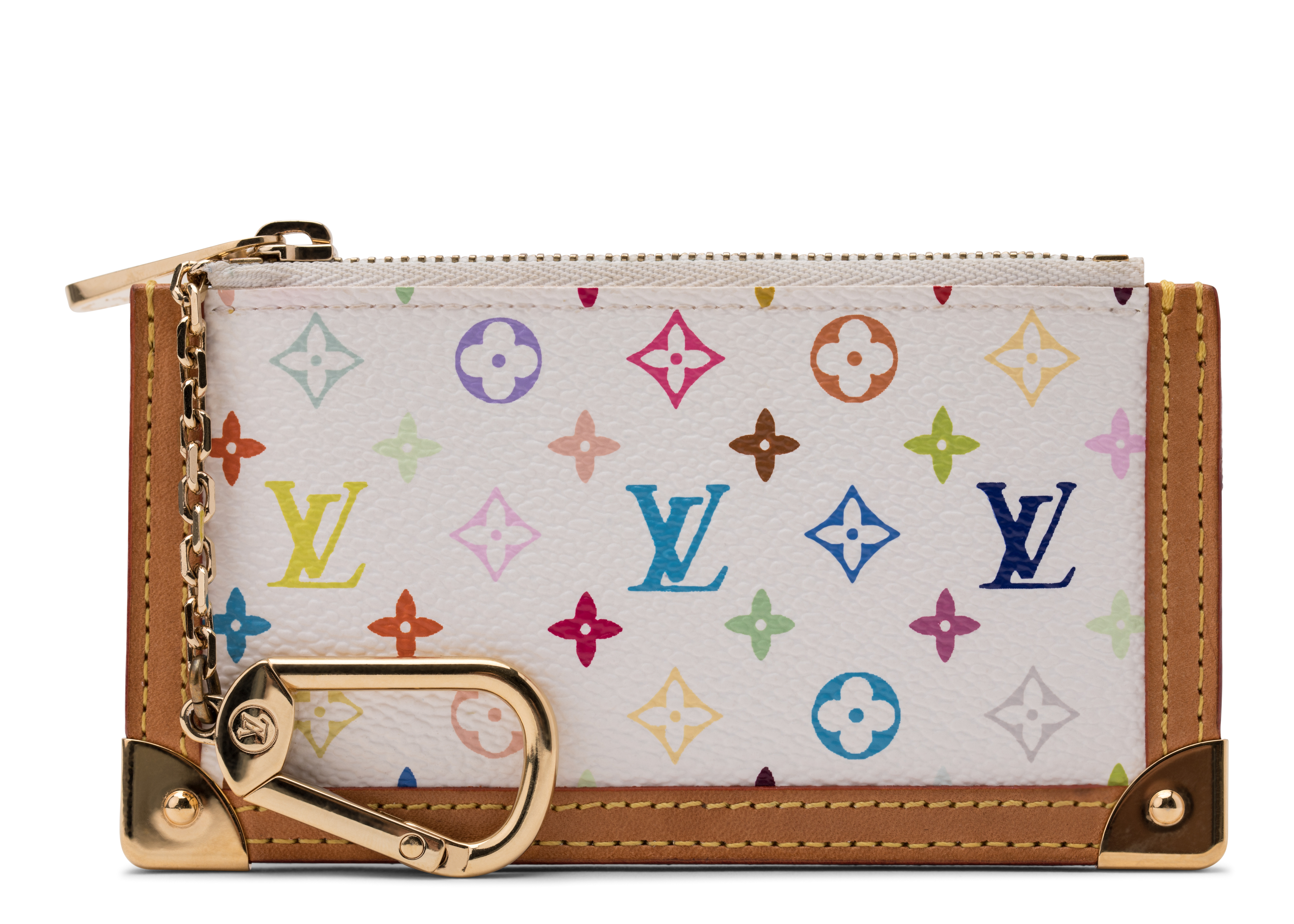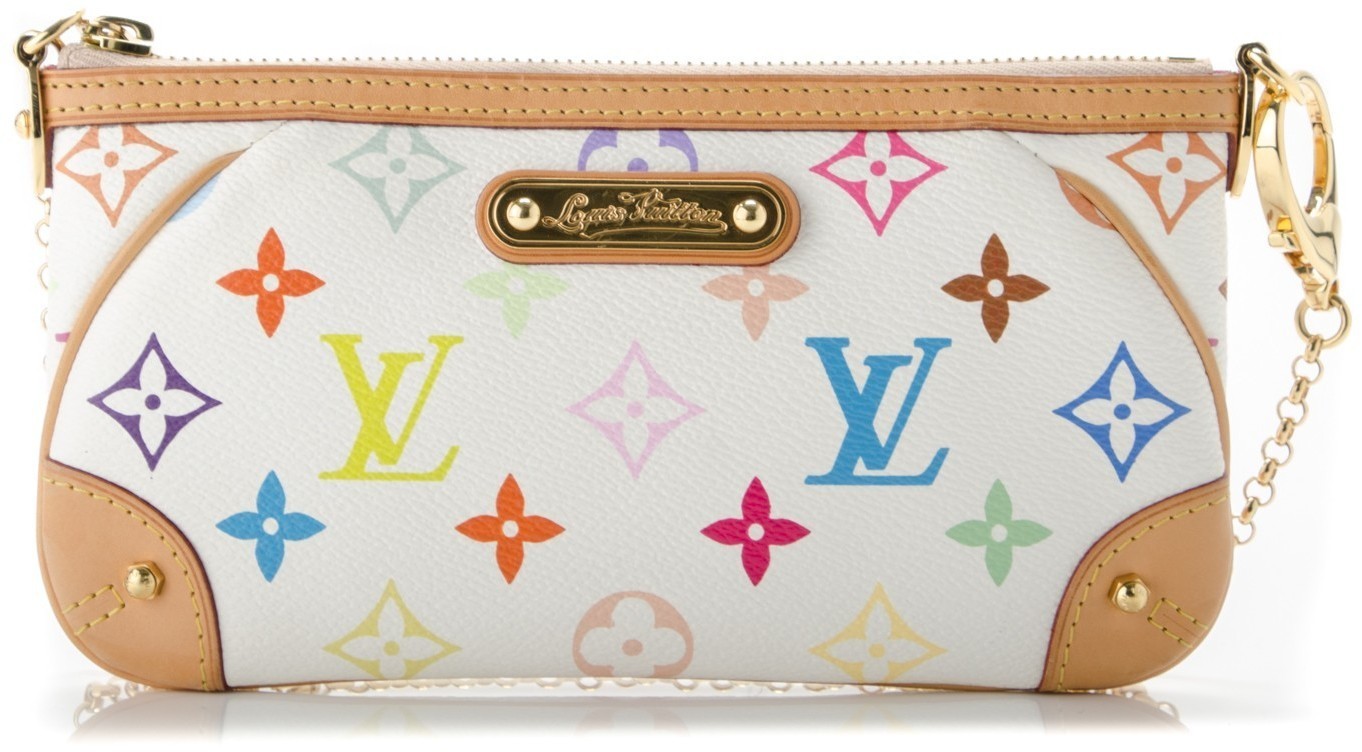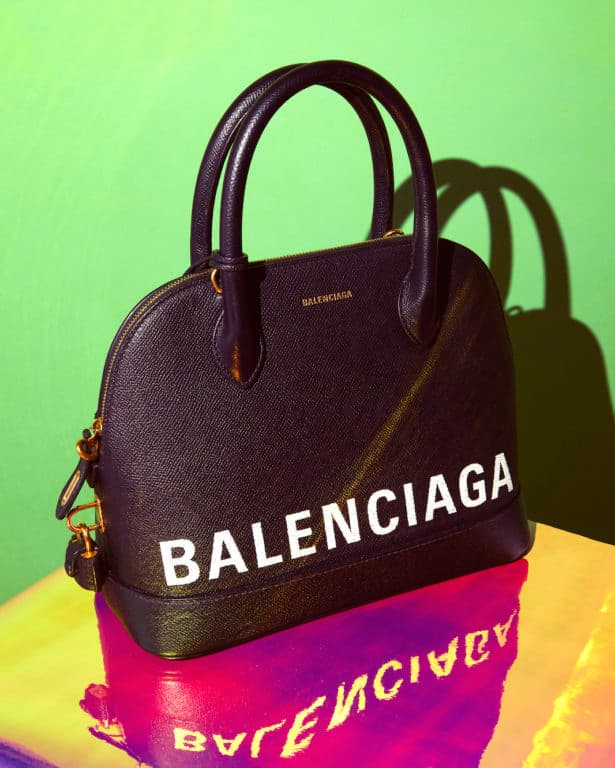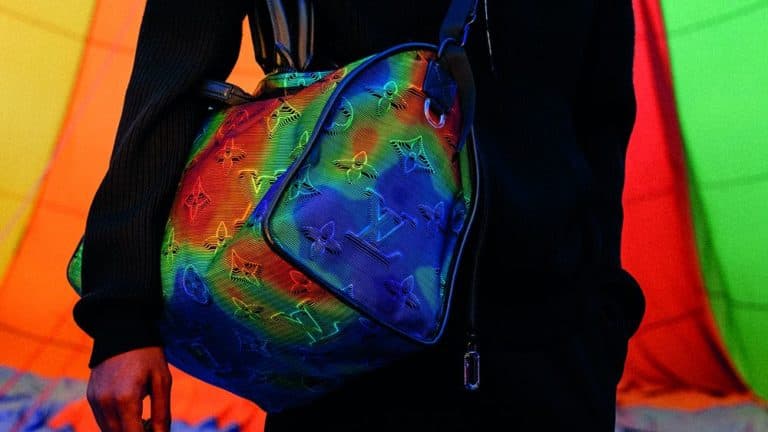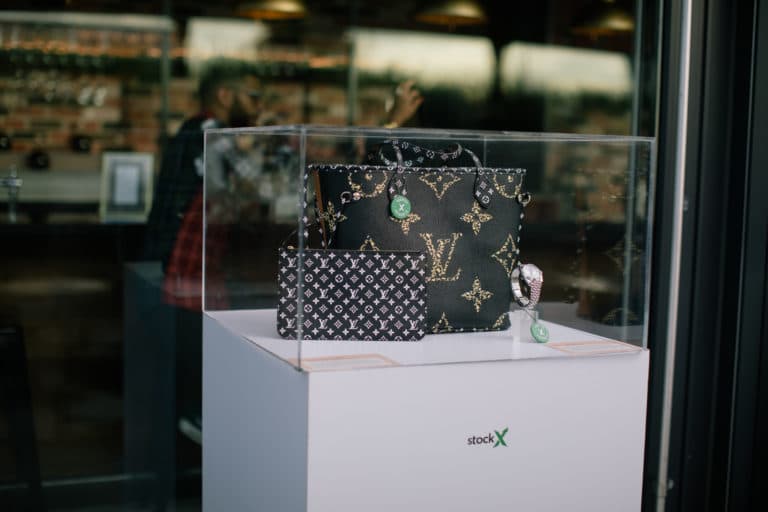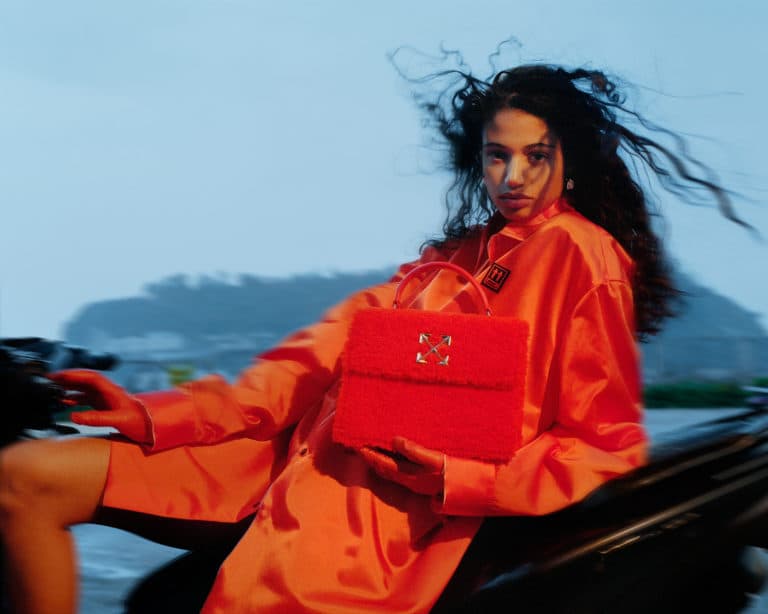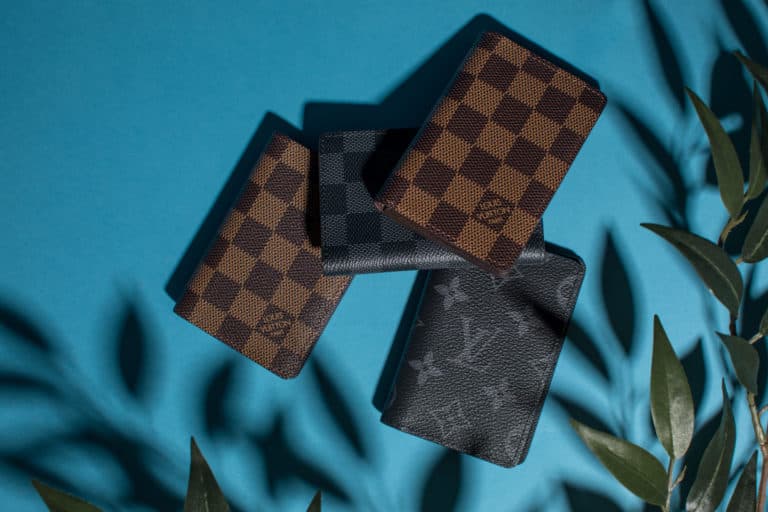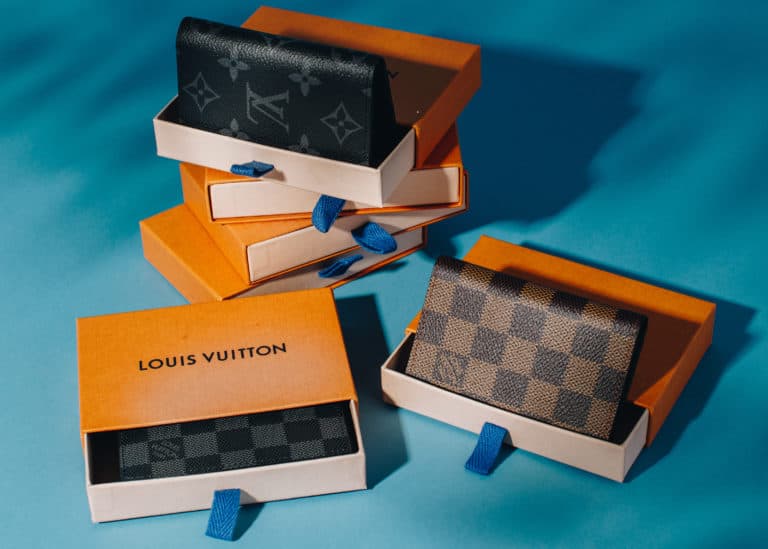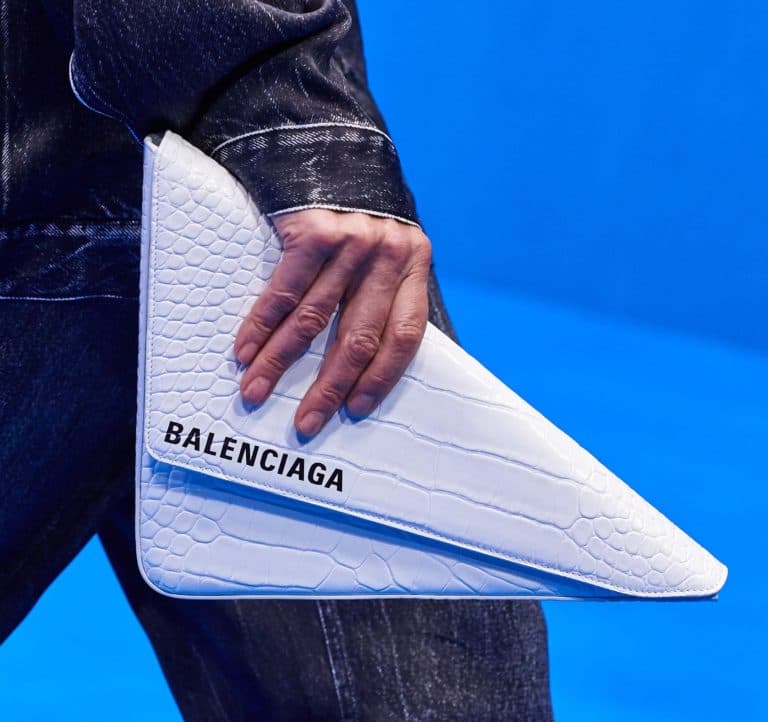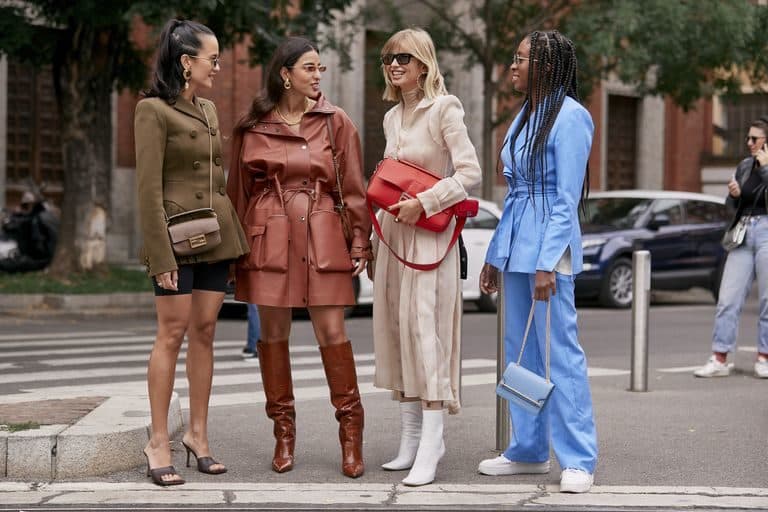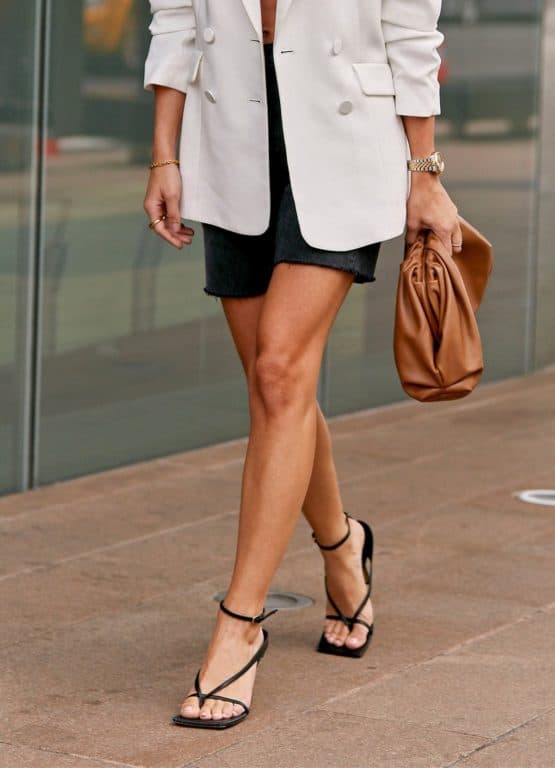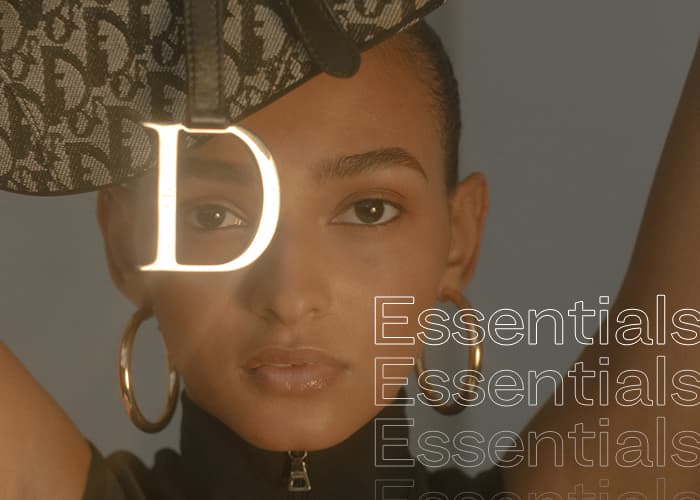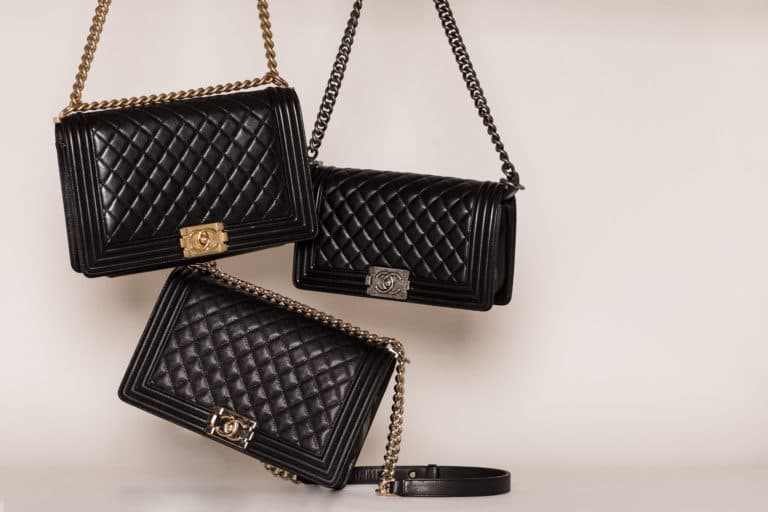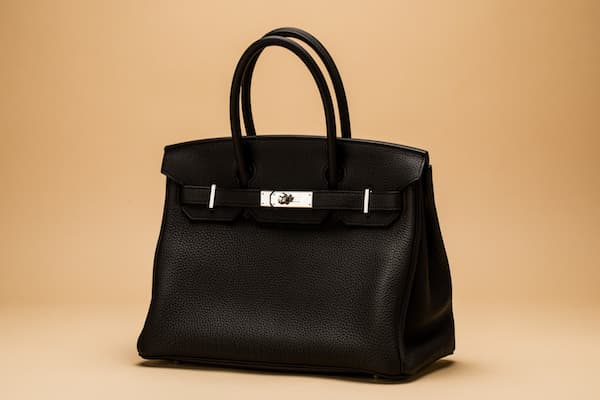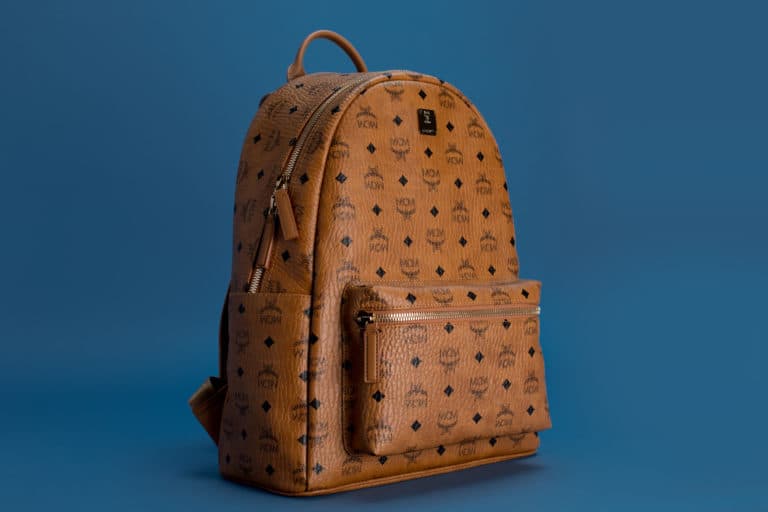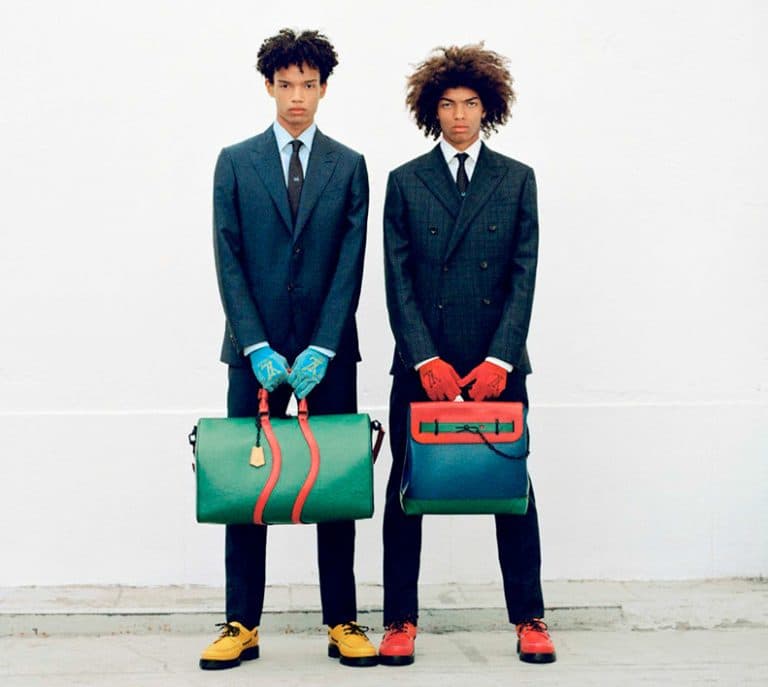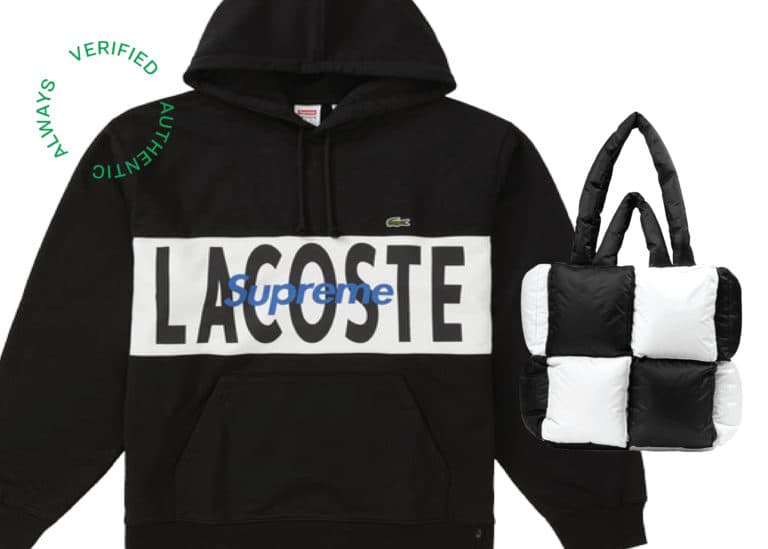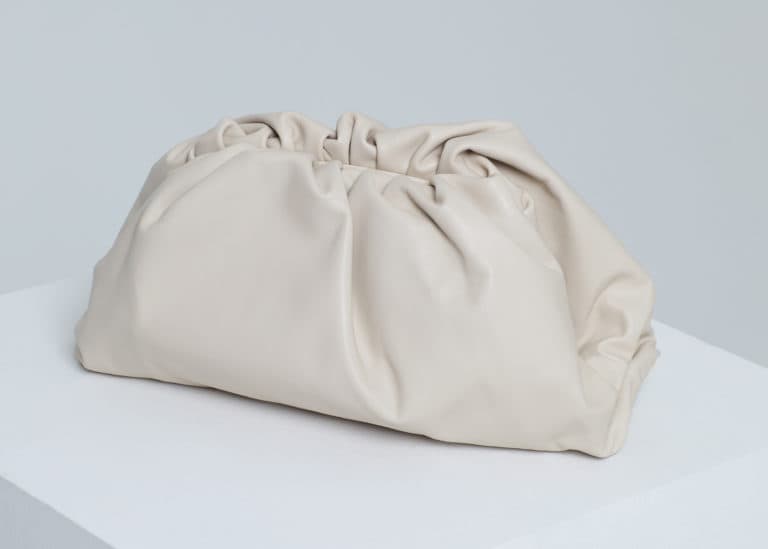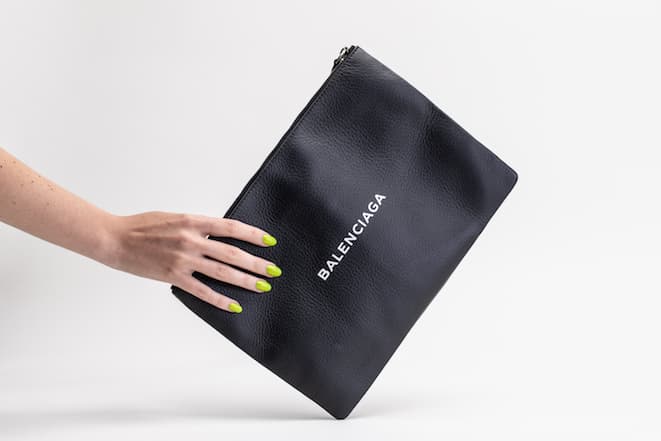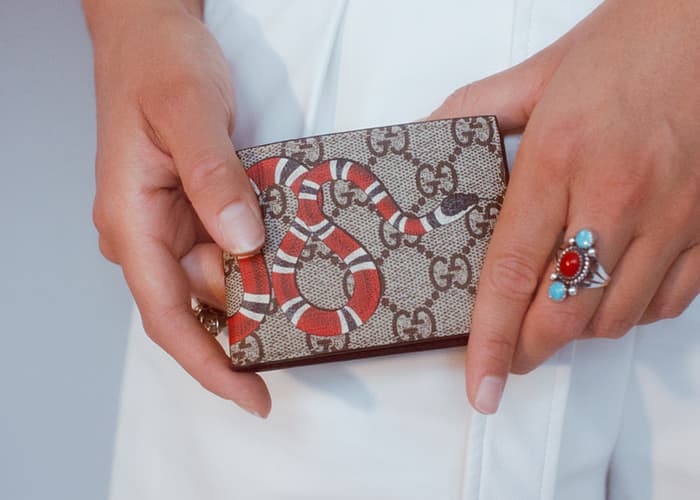They’ve been carried around by Travis Scott, touted by Kim Kardashian as gifts for a growing brood that ensures their cultural domination has no end in sight, and appeared in Ariana Grande’s ode to love and loss in her hit video for “thank u, next.”
So how did the Multicolore line go from an early 2000s icon to a vintage handbag collector’s dream?

Japanese artist Takashi Murakami has found wide success in the global fashion and art world, but before he collaborated with the likes of Louis Vuitton, he introduced the Superflat movement in 2001, a fusion of art and animation that focused in on post-war Japan, kawaii (cute) culture and became a commentary on the changes taking place in Japanese society as it hurdled towards Western consumerism.
Speaking to the New York Observer in 2011, Murakami commented on his focus between war and art:
“I don’t think the art is just bright. I think that those who were able to enjoy consumer culture and the world of consumerism were in the countries that were victorious in the war and by the countries that were victorious in the war I mean the U.S. and the British. Societies that lost the war, like Japan, envied the consumerism of the winners but they still wanted at least to be able to borrow what they envied.”
Just before Murakami’s art exhibit launched in West Hollywood, Calif., art critic Hunter Drohojowska-Philp referred to the Superflat movement as “the two-dimensionality of Japanese graphic art and animation, as well as to the shallow emptiness of consumer culture” in a piece previewing the show for artnet.
That assessment becomes quite interesting when you think of what happened just two years after: Murakami’s art entered the very consumer culture it was attempting to make a commentary on, sold on products from a brand that has played a significant role in shaping that culture to begin with. That was especially true in Japan, where the love for Louis Vuitton knows no bounds – some researchers even claimed that 40 percent of all Japanese in the 2000s owned a Louis Vuitton product.


But perhaps because of these elements, it was a relationship that was meant to be, and it began during LV’s Marc Jacobs era, where Murakami partnered with the luxury brand founded in 1854 in Paris originally as a trunk and luggage company to infuse a bit of color and a new sense of style into bags and accessories traditionally leaning towards black and brown hues.
The initial Murakami Multicolore collection launched in Spring/Summer 2003 and featured a reinterpretation of Louis Vuitton’s classic monogram in pinks, blues, greens and yellow on both black and white canvas – and instantly became a hit, infiltrating the pop culture world as it showed up on the arms of Jessica Simpson, Ashley Tisdale, Naomi Campbell, and Lil’ Kim. Other designs included the Monogramouflage, Cherry Blossom and Character Bag.


Perhaps the biggest aficionado of the newly unveiled line was none other than socialite Paris Hilton, who dominated the scene for years before unknowingly introducing to the world the gift that has kept on giving for 10 years strong: Kim Kardashian and everyone else who kame (not a typo and it stays) along with her.
Hilton and her sister Nicky were pictured everywhere with the Multicolore bags, from parties to their casual paparazzi-accompanied strolls they took across Los Angeles. Hilton even appeared in a skit on SNL touting both the black and white canvas Murakami Multicolore bags.

Murakami went on to provide the artwork for Kanye West’s critically acclaimed and game changing third studio album “Graduation.” He also directed the music video for “Good Morning.” Ten years later, Murakami contributed artwork to “Kids See Ghosts,” West’s 2018 collaboration with Kid Cudi.
Their relationship began when Kanye’s record label contacted Murakami after the rapper liked a sculpture of his. “Kanye came to the and stared at the sculpture, completely without words, just silently looking at it,” Murakami previously told Jay Caspian Kang in The New York Times, who also asked him about how Murakami had talked about the need to reject Western influence in his work early on, and then collaborated with the likes of West and Vuitton.
“The offers to collaborate have always from the other side,” he said. “What the West is looking for in Japan is something more than the very artificial, Hollywood, over-the-top Japan. I offer the middle ground, something that is just the right temperature for Western audiences.

As Murakami trickled further and further into mainstream American pop culture, his collaborations with LV continued. In 2010, his limited edition Cosmic Blossom Collection launched, combining his now iconic “Flowers with Smiley Faces” with the traditional Louis Vuitton monogram.
But in 2015, Louis Vuitton announced that it was ending its relationship with Murakami, around the same time when former Balenciaga creative director Nicholas Ghesquière took over the reigns from Marc Jacobs. It told Women’s Wear Daily that the brand would like to “look forward.”
What they didn’t take into account, was that we were soon going to be in a cycle of fashion completely intent on looking backward instead. A generation raised on the internet coupled with the feeling of impending doom brought on by the general state of the world was the perfect set up to crawl back into the warm, squishy cocoon of protective (and deceptive) nostalgia. The ’90s and early aughts came back with a vengeance, from crushed velvet, jelly shoes, the fanny pack to every cinematic remake you can think of. A new era of socialites and pseudo-celebrities, now mostly called social media influencers, heralded in and championed these trends. And the Kardashian clan – the undisputed queens of the social media game – were front and center when it came to the neo-Murakami era.
Perhaps they were influenced by their brother-in-law Kanye’s love for the Japanese artist, but Kourtney Kardashian and Kendall Jenner were seen carrying mini LV x Murakami Speedys in both black and white. Travis Scott, part of the Kool club via his association with Kylie Jenner was seen sporting the ultra rare black Murakami Keepall.
And not to be outdone, Kim declared over Instagram that she had ordered black Murakami mini Speedy bags for the girls in their family straight from Japan.


Without new Murakami products being made, and demand growing, prices have skyrocketed – and so has Murakami’s influence, infiltrating the streetwear and sneaker world like never before. ComplexCon dropped a limited edition vinyl album featuring artwork by Murakami, and he collaborated with several brands, from Uniqlo to Vans to October’s Very Own, where he released a clothing line which included this signature smiley flower hoodie:
If you thought Murakami was done invading current style trends, think again – the 56-year-old artist announced another collaboration this month at Paris Men’s Fashion Week with Japanese bag and accessory outfitters, PORTER, where he previewed both a sneaker design and bags featuring his signature flower power style:
View this post on Instagram
This spring I will make colabo w Porter @yoshidakaban.official . Very soon. ? @chiaki_kasahara_
Given Murakami’s lasting and increasing presence in the world of fashion and streetwear, Louis Vuitton might want to rethink its vision of “looking forward,” while leaving the Multicolore line in the past. Murakami and his visionary designs are in big demand and likely to be part of our future one way or another, so buy (or sell) an important piece of fashion history while you still can.





